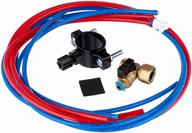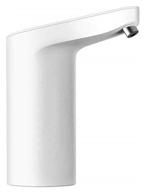
Review on 💧 Advanced AIBERLE 12 9 Countertop Water Purifier: Clean and Refreshing purification Solution by Victor Ceja

Excellent water filter CF
This is a simple and easy to use water filter system. It produces filtered water at room temperature or hot water as needed. All you need is some countertop space and a power outlet to plug in. Fill the tap water tank and it then filters the water and sends it to the clean water storage tank. This allows filtered clean water to be distributed faster than the slow trickle rate filtration process produces. The filtration process uses mud pre-filtration, activated carbon and micro-ultrafiltration pores to produce pure water. This is an improvement over the simple activated carbon filter commonly used in water jugs and faucet mounted cartridges. The ultrafiltration process is similar to that used in LifeStraw filters. It is similar to reverse osmosis, but does not remove calcium and other minerals, which softens the water. So testing water hardness or TDS (Total Dissolved Solids) is not a way to reliably measure the capabilities of this filter. When comparing reverse osmosis to ultrafiltration, there are a few differences. In particular: Reverse osmosis systems produce waste water that has to be disposed of. This effluent contains discarded contaminants and minerals and must be flushed from the reverse osmosis membrane. Ultrafiltration does not typically produce effluent. Some designs can. - RO removes very small molecules including minerals that make water "hard". Ultrafiltration does not remove minerals. Reverse osmosis can remove fluoride. Ultrafiltration has fewer options for this. However, when activated carbon and UV are used together, some reduction in fluorine content is possible. What is better? - I would say that this system is easier to use. You simply fill the tap water tank, let it filter and fill the fresh water tank. Dispense filtered water and refill the tap water tank as needed. Replace the filters as needed. This device can be placed anywhere power is available. It should not be left near the kitchen or sink. A countertop reverse osmosis system works in a similar way. Fill the tap water tank, dispense filtered water and empty the tap water tank when it reaches the bottom empty now mark. This is important because the water left in the tank is "rejected contaminants". The reverse osmosis unit has an internal filter system that can hold an almost full water tank. It loads the system and directs the waste water back into the tap water tank in such a way that it does not mix. After emptying the tap water tank, refill it. I repeat. This UV filter is unique in that it is also equipped with a heating element and can produce hot water. You can use it to make tea, hot chocolate and other hot beverages. I think this filter will work great in a small office or kitchen as well as at home. It is easy to use and produces high quality filtered water that still contains minerals. It removes many chemical, fine particles and organic pollutants. It is designed for use with tap water, not well water or other sources that have not yet been purified. 4 solid stars.
- kitchen and bathroom lights
- old
New products
Comments (0)
Top products in 💧 Water Purification
Another interesting products
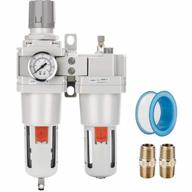
NANPU 1 FRL Air Filter Regulator Lubricator Combo With 0-150 Psi Gauge, 5 Micron Brass Element, Poly Bowl & Semi-Auto Drain - Metal Bracket Included

20 Review
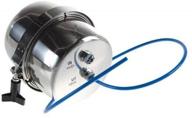
Filter under the sink Aquaphor Favorit ECO silver

20 Review
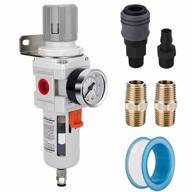
NANPU Compressed Air Filter Regulator Combo: Brass Element, Semi-Auto Drain, 0-150 Psi Gauge, And More

21 Review
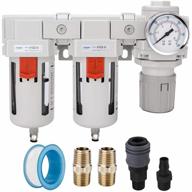
NANPU 1/2" NPT Air Drying System - 5 Micron Particulate Filter, 0.01 Micron Coalescing Filter, Air Pressure Regulator Combo - Semi-Auto Drain, Poly Bowl W/Metal Gauge

23 Review




